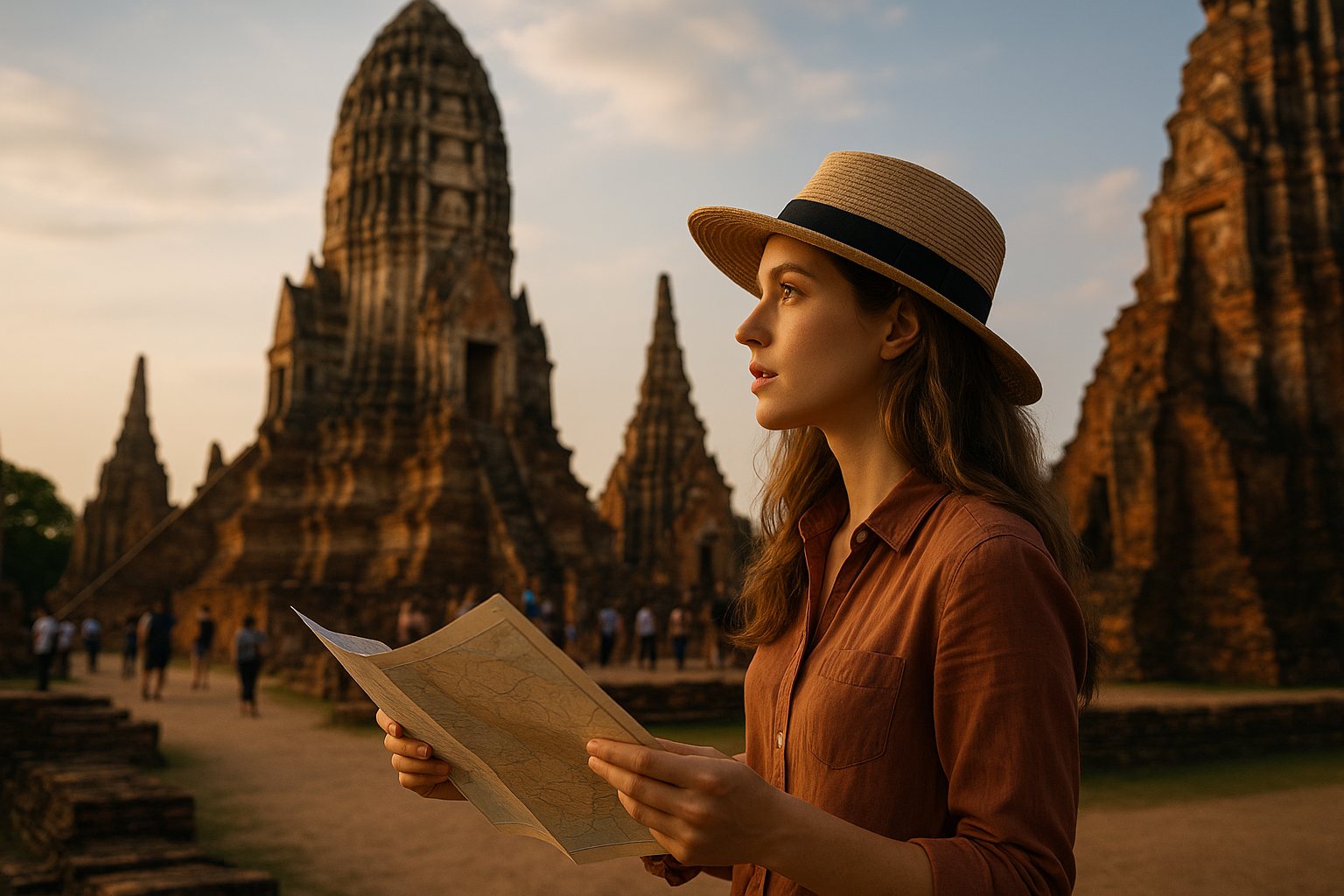Understanding Global Travel and Cultural Experiences
Travel offers a way to observe and understand different cultures, traditions, and environments. Within each country, diverse customs, architectural styles, and local practices reflect historical developments and societal values. Learning about travel includes understanding cultural celebrations, local cuisine, natural landscapes, and urban life. This content aims to introduce travel as a way to understand global society and its diversity.

Travel has evolved from a luxury to a transformative experience that broadens perspectives and deepens our understanding of the world. Beyond picturesque landscapes and tourist attractions, global travel offers immersive opportunities to engage with diverse cultures, histories, and ways of life. This cultural engagement creates meaningful connections and fosters greater appreciation for the rich tapestry of human experience across continents.
Cultural Traditions Observed Through Immersive Travel
Cultural traditions serve as windows into the soul of a destination, revealing values, histories, and social structures that have evolved over generations. Immersive travel experiences allow visitors to witness and sometimes participate in these traditions firsthand. In Japan, travelers might observe the meticulous ritual of a traditional tea ceremony, while in Morocco, they might experience the communal nature of mint tea preparation and sharing. Indigenous communities in Australia, North America, and South America often welcome respectful visitors to witness ceremonies that have been practiced for thousands of years. These experiences provide context that typical tourism often misses, offering insights into how communities maintain their cultural identity while adapting to modern influences.
Historical Sites and Architectural Heritage Around the World
The built environment tells stories of human ingenuity, artistic expression, and historical developments across civilizations. From the mathematical precision of the Egyptian pyramids to the intricate stone carvings of Angkor Wat in Cambodia, architectural heritage sites provide tangible connections to past societies. European cathedrals showcase medieval engineering and religious devotion, while ancient cities like Machu Picchu demonstrate sophisticated urban planning that worked in harmony with natural landscapes. Beyond famous landmarks, vernacular architecture—the everyday buildings designed for local conditions—offers equally valuable insights into how communities have adapted to their environments using available materials and traditional knowledge systems.
Local Practices and Social Norms Across Destinations
Understanding local customs and social expectations enhances travel experiences while demonstrating respect for host communities. In Scandinavian countries, punctuality is highly valued, while Mediterranean cultures often embrace a more flexible approach to time. Physical greetings vary dramatically—from the Japanese bow to the three-kiss greeting in parts of Europe and the Middle East. Dining customs present particularly rich opportunities for cultural exchange, whether learning to eat with chopsticks in East Asia, sharing communal dishes in the Middle East, or understanding the importance of specific seating arrangements at formal meals. These social practices reflect deeper cultural values around community, hierarchy, and interpersonal relationships that have developed over centuries.
Festivals, Cuisine, and Regional Experiences
Festivals and food traditions offer accessible entry points into cultural understanding. Events like India’s Holi celebration, Mexico’s Day of the Dead, and Thailand’s Songkran water festival reveal spiritual beliefs, historical commemorations, and seasonal rhythms important to local communities. Culinary traditions similarly reflect environmental conditions, historical influences, and cultural values. Vietnamese cuisine tells stories of French colonial influence blended with indigenous ingredients, while Ethiopian injera bread represents both practical nutrition and communal dining practices. Regional variations within countries further demonstrate how geography shapes cultural expression—northern and southern Italian cuisines differ dramatically despite sharing national identity.
Natural Landscapes and Urban Environments in Tourism
The relationship between natural settings and human settlements reveals much about cultural adaptation and values. In mountainous regions like Nepal and Peru, communities have developed unique agricultural techniques and transportation systems to thrive in challenging terrain. Coastal communities worldwide show diverse approaches to fishing, boat-building, and weather prediction based on generations of accumulated knowledge. Urban environments similarly reflect cultural priorities—compare the garden-focused design of Kyoto, the canal systems of Amsterdam, and the grid pattern of New York City. Each represents different philosophical approaches to organizing human habitation and relationship with nature.
Sustainable and Responsible Travel Practices
As global tourism increases, sustainable travel practices have become essential for preserving cultural heritage and natural environments. Community-based tourism initiatives in countries like Costa Rica and Kenya demonstrate how local involvement can create authentic experiences while ensuring economic benefits remain in host communities. Cultural heritage sites worldwide now implement visitor management systems to prevent degradation from overtourism. Travelers increasingly seek experiences that minimize environmental impact while maximizing meaningful cultural exchange—from homestay accommodations to locally-guided experiences that provide deeper context than mass tourism alternatives.
Prices for authentic cultural experiences vary widely across destinations. Local cooking classes might range from $15-30 in Southeast Asia to $75-150 in Western Europe. Guided cultural tours with community members typically cost $25-100 depending on location, duration, and group size.
| Experience Type | Typical Cost Range (USD) | Regional Variations |
|---|---|---|
| Local Cooking Classes | $15-150 | Lower in Southeast Asia, higher in Europe/North America |
| Cultural Heritage Tours | $25-200 | Urban tours generally less expensive than remote sites |
| Traditional Craft Workshops | $30-120 | Price reflects materials and instructor expertise |
| Homestay Experiences | $20-100 per night | Higher in tourist-developed regions |
Prices, rates, or cost estimates mentioned in this article are based on the latest available information but may change over time. Independent research is advised before making financial decisions.
Global travel offers transformative opportunities to engage with cultural diversity while fostering greater cross-cultural understanding. Through mindful engagement with traditions, historical sites, social practices, and local environments, travelers can develop deeper appreciation for both human commonalities and cultural distinctiveness. This nuanced understanding contributes to more meaningful travel experiences while supporting the preservation of cultural heritage for future generations to experience and appreciate.




